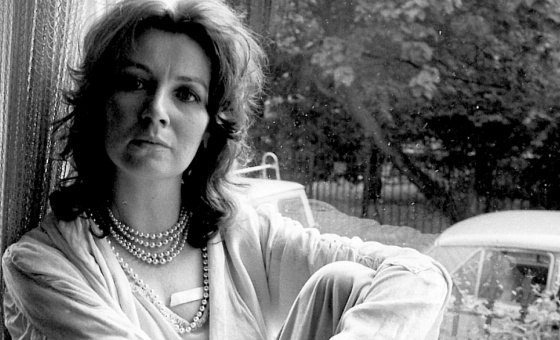This is the last article you can read this month
You can read more article this month
You can read more articles this month
Sorry your limit is up for this month
Reset on:
Please help support the Morning Star by subscribing here
ROSALIND Franklin was a woman scientist who played an integral role in the discovery of the structure of deoxyribonucleic acid (DNA). It was Franklin’s X-ray images that allowed James Watson and Francis Crick to decipher its double-helix shape.
Franklin died from ovarian cancer in 1958, aged just 37, and her early death as well as her gender meant she never received the recognition given to her male peers. Watson and Crick received the Nobel Prize in 1962 for their work based fundamentally on Franklin’s foundation work.
Now at last Rosalind Franklin will get some of the recognition she has long deserved when the new UK-assembled rover that will be sent to Mars in 2020 will bear her name.
The honour follows a public call for suggestions that drew nearly 36,000 responses from right across Europe. Astronaut Tim Peake unveiled the name at the Airbus factory in Stevenage last month where the robot is being assembled.
At the naming ceremony Franklin’s sister Jenifer Glynn remembered her sister: “In the last year of Rosalind’s life, I remember visiting her in hospital on the day when she was excited by the news of the Soviet Sputnik satellite — the very beginning of space exploration,” she said on Thursday.
“She could never have imagined that over 60 years later there would be a rover sent to Mars bearing her name, but somehow that makes this project even more special.”
The six-wheeled vehicle will be equipped with instruments and a drill to search for evidence of past or present life on the Red Planet. Giving the rover a name associated with a molecule fundamental to biology is very appropriate. The European Space Agency (ESA) rover will now see the name of Rosalind Franklin travel far beyond Earth.
The rocket that will send the Franklin rover to Mars is booked to launch in July/August 2020. The various components needed for the mission are gradually coming together under the direction of ESA and its partner on the venture — the Russian space agency Roscosmos. It will travel in a German-built capsule and be launched in a Russian rocket.
In 1952, Rosalind Franklin was at King’s College London investigating the atomic arrangement of DNA, using her skills as an X-ray crystallographer to create images for analysis.
One of her pictures, known as Photo 51, provided the essential insights for Crick and Watson to build the first three-dimensional model of the two-stranded macromolecule. It was one of the supreme achievements of 20th-century science, enabling researchers to finally understand how DNA stored, copied and transmitted the genetic code of life.
Franklin’s contribution has never really been given the attention it deserves, and has even been underplayed. Perhaps that is to be expected given so many attitudes among the scientific community.
Take the case of Alessandro Strumia for instance. Strumia was a senior scientist at the European Organisation for Nuclear Research, better known as Cern. He is also a misogynist, a crude outspoken sexist and, for a supposedly clever man, a bit of a bollocks-spouting halfwit.
During a seminar on gender issues in physics, and in front of a mostly female audience, this prize clown claimed that the “Physics was invented and built by men…”
Cern, where Strumia works, is a European research organisation that operates the largest particle physics laboratory in the world.
It took only days for his boss at Cern to suspend him. As you would expect the boss at Cern is a top physicist author of over 500 books on physics; a member of the Italian Academy of Sciences; an honorary professor at Edinburgh University; a foreign associate member of the US National Academy of Science and the French Academy; and the UN secretary-general’s adviser on science.
As head of Cern this scientist headed the Atlas project of around 3,000 physicists from 180 institutions in 38 countries. The Atlas project discovered the Higgs boson particle.
Oh, and did I mention that the head of Cern, Alessandro Strumia’s boss is not just a top physicist but also a woman — Fabiola Gianotti — perhaps that is what upset Mr Strumia so much.
Just a few weeks after Strumia’s stupid remarks the Nobel prize for physics was awarded to Donna Strickland, another woman physicist, for work on generating high-intensity, ultra-short optical pulses.
Canadian Strickland has a long and honourable record in the field of physics but that didn’t stop the wise men at Wikipedia deciding she wasn’t important enough to have a wiki entry as late as March last year.
Alessandro Strumia and the other hand has featured in Wiki pages since the year dot.
Strickland isn’t the first woman physicist to win the Nobel prize. Maria Goeppert Mayer, a German American physicist, won it in 1963 for her work describing the structure of the atomic nucleus.
Marie Curie won her first Nobel in 1903 for her role in the discovery of radiation. She nearly didn’t get the prize. The French Academy of Sciences had actually only nominated the men for it; Curie was only included at her husband’s insistence.
Women in most fields, not just physics, have always been hidden from history – I even wrote a book with that title. The 2016 film Hidden Figures told the previously little known story of three black women physicists and mathematicians Mary Johnson, Mary Jackson and Dorothy Vaughan who despite Jim Crow laws and racial segregation in Nasa itself did the main calculations for the US space race.
Astronaut John Glenn demanded that one of them, Mary Johnson do the calculations for all his flights. “If she does the sums,” he said, “I know I’ll get back safely.”
That film, and the book it was based on, did much to give some much belated credit to those black women scientists but the large number of white women also involved in the science behind the space programme have still never been recognised. So let’s hear it for Tut Hedgepeth, Lilly Ann Bajus, Roxanah Yancey, Emily Stephens, Angel Dunn, Dottie Crawford Roth, Dorothy Clift Hughes and Trudy Wilken Valentine.
Those tales of early days at Nasa reminded me of an oh-so-similar case in Britain in the 1920s. Neville Shute Norway – later to make his reputation as a novelist under the name Neville Shute – worked for Vickers Ltd subsidiary the Airship Guarantee Company as chief calculator and stress engineer on the R100 Airship working alongside the chief designer Barnes Wallis — he of later dambuster bouncing bomb fame.
Shute Norway was responsible for checking literally millions of calculations for the frames, struts, internal rigging and all the other parts that made up the aluminium spider’s web that was a 1920s airship. Although he was responsible for the calculations they were all actually carried out by a hangar full of skilled women using slide rules — an early form of mechanical analog computer but human rather than electronic.
I’ll finish with a short list of women who have made major contributions to physics and related science. We have already mentioned Marie Curie.
Marie Sklodowska Curie: A Polish physicist best known for discovering the radioactive substance radium, with her husband Pierre Curie in 1888. She was one of the 20th century’s most remarkable scientists awarded two Nobel Prizes. She and husband Pierre coined the term radioactivity and researched radioactive substances, and in 1898 identified two new radioactive elements: radium and polonium.
After Pierre died in 1906 Marie investigated radium as a cancer treatment. In 1911 she received her second Nobel Prize, this time for Chemistry.
Hedy Lamarr: Her post war day job was as Hollywood’s most beautiful woman. In her spare time she invented a frequency hopping technique still used in mobile phones.
Grace Hopper: Computer scientist and US navy admiral who invented the term debugging after she removed an actual moth from a malfunctioning computer.
Lene Hau: This Danish physicist slowed down a beam of light and eventually stopped it completely. This led to important developments in quantum computing and quantum cryptography.
Jocelyn Bell Burnell: While still a student she discovered pulsars, rotating neutron stars. Her work earned her male university supervisor a Nobel Prize.
Sandra Faber: Led a team to repair and improve the Hubble telescope. After her efforts the telescope gave some of the most spectacular images of space.
Vera Rubin: In the 1970s, astronomer Vera Rubin found evidence of what we now call dark matter.
And there are thousands more.











